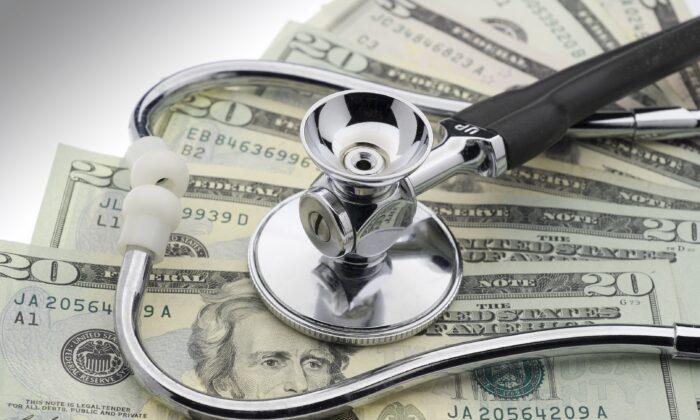If you haven’t examined your monthly utility bill lately, brace for a shock when the cost of air-conditioning comes due in the next few weeks. If the AC bill doesn’t raise your pulse, your heating tab next January might, assuming that global energy markets remain unsettled.
What Can the Average Consumer Do to Rein in the Costs?
You can adjust the thermostat up in the summer (or dial it down in the winter). Draw the shades on hot days. Buy a box fan to keep the air moving. Put on a sweater in the winter. Convert to low-wattage LED lighting.The U.S. Department of Energy’s Office of Energy Efficiency and Renewable Energy provides a step-by-step guide, including many suggestions for changes in behavior that require no commitment of money.
Don’t Wait for the Weather to Change
Energy experts say consumers were just beginning to catch on to the idea of upgrading their homes when big heating bills started to land last winter. “But then the weather turns nice, and we forget about energy efficiency until later,” said George Mullikin, the program manager for CleaResult, which conducts energy audits for Peco Energy customers. “So there’s definitely a seasonal aspect that drives it.”Get an Energy Audit
Before you launch an energy-efficiency project, get a professional energy assessment of your house. Most utilities will offer discounted assessments from a certified auditor.Seal up That Thermal Envelope
Experts who do weatherization work on behalf of utilities and publicly funded programs, who need to justify the work as cost-effective, say the best way to reduce energy costs is to reduce the leakage of air from inside a home by adding insulation and by filling cracks — otherwise known as sealing a home’s thermal envelope.“Air-sealing is by far the most cost-effective thing that you can do in virtually any home, even more important than insulation,” said Steve Luxton, the executive director of the Energy Coordinating Agency (ECA), the Philadelphia nonprofit that weatherizes homes for low-income clients in the region.
Buy High-Efficiency Systems
If your current air-conditioning or heating system is old and inefficient, it may also be worth the expense of replacing the system with newer high-efficiency models.Help Paying Repair Bills
Most utilities offer rebates to support the cost of new energy-efficient appliances or heating systems. The money is often paid by ratepayers, as part of government energy conservation mandates.Peco says its customers can realize as much as $435 in rebates for homes with central air and non-electric heating if they work through a participating contractor.
New Jersey utilities provide 0% financing and incentives up to $4,000 for whole-house energy-efficient upgrades done by certified contractors, according to the New Jersey Board of Public Utilities.
“New Jersey’s incentives are definitely more attractive,” said Baird, whose company works on both sides of the Delaware River. “They have a really phenomenal financing option.”
Low-income customers have an additional menu of options available through organizations such as the Energy Coordinating Agency. The U.S. Department of Energy Weatherization Assistance Program, which is for low-income families, saves the average household $372 a year in energy costs.
Pennsylvania this month authorized a onetime $125 million allocation of unspent coronavirus money from the American Rescue Plan for a new program called Whole-Home Repair, which provides grants as much as $50,000 to homeowners for projects including weatherization and energy efficiency. The funding allows homeowners to repair leaky roofs, which need to be fixed before contractors add new insulation to an attic. The main sponsor of the legislation was State Sen. Nikil Saval (D., Philadelphia).
ECA also recently received a onetime grant of $150,000 for emergency water heater replacements, which are not usually covered under low-income programs. ECA is administering the program through its Heater Hotline: 215-568-7190. The grant came from the Pennsylvania Department of Human Services at the request of State Sen. Sharif Street (D., Philadelphia).
What About the Windows?
Often the first thing that consumers ask about is a window replacement. Everybody has heard the radio ads, promising big energy savings with new windows.“If I’m ever having a boring day and I want to pick a fight, all I have to say is this: Windows are the least cost-effective thing you can put in a home,” said Luxton. “And that’s guaranteed to get somebody from the window industry up in arms.”
Windows are an energy sieve, Luxton said. “Glass hasn’t changed, it might have a coating that ever so fractionally slows down the transmission of energy, but the energy still moves through it,” he said. “So putting in a new window does not really do anything at all, or very little, anyway, compared to things that do a lot.”
Most energy-efficiency programs funded by utilities or with public money won’t pay for window replacements, said Mullikin.
“If your windows operate well, if they’re not too leaky or can be sealed up with some inexpensive materials to make them less drafty, then that’s probably good enough. Replacing those windows can be very expensive, and there’s not a lot of payback.
For More Information
The U.S. Department of Energy’s Office of Energy Efficiency and Renewable Energy provides a step-by-step guide on energy programs.A good starting point is to reach out to your energy utility, which will provide an array of products and services for free or at a discount. Most of them will help arrange an energy assessment or audit, which will give a homeowner a cost-effective roadmap for reducing energy.






